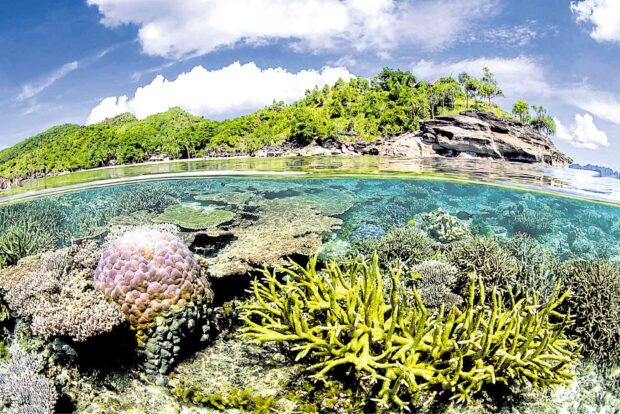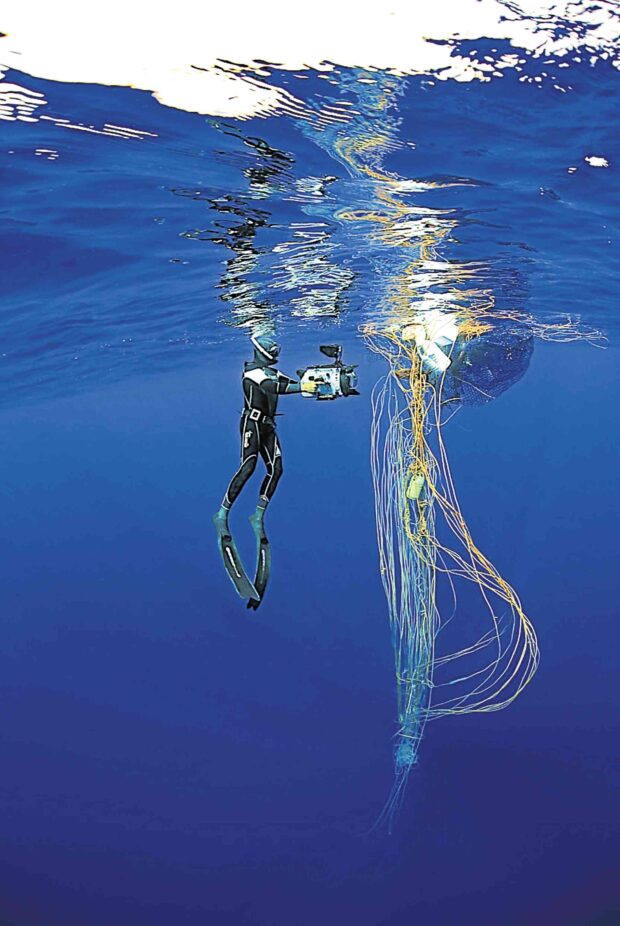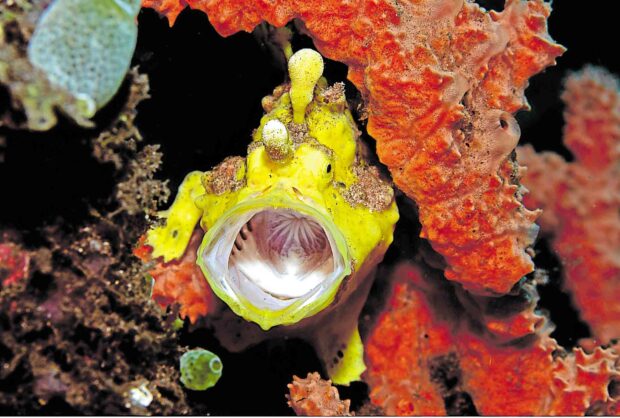‘Planet Earth III’ producer on hope, heartbreak and PH frogfish

For viewers who remember sitting through the BBC’s 11-part 2006 nature documentary series “Planet Earth” and its six-episode 2016 sequel “Planet Earth II,” it certainly didn’t come as a surprise for the franchise to make it to the list of 100 best TV shows of the 21st century, released by The Guardian in 2019. As if proving it was no fluke, it’s also been ranked No. 3 in IMDb’s top 250 TV shows as of 2023.
The Emmy- and Peabody-winning series hosted by David Attenborough isn’t just groundbreaking for the epic-scale technological innovations it utilizes to capture a glimpse of the vast but little-known habitats that thrive on land and under the sea, far away from man’s destructive reach.
It also plays out like a collection of rigorously curated, patiently documented and stunningly photographed stories that inform as much as they entertain.
Filmed over the course of five years, the series’ latest installment “Planet Earth III,” which premieres tomorrow (Oct. 29) at 8 p.m. on BBC Earth Asia (channel 245 on Cignal in the Philippines), easily lives up to its predecessors’ high-wire act, comprising eight astounding episodes that are alternately thrilling, chilling, heartbreaking, visually stunning and ultimately illuminating as it mulls on the challenges that wildlife faces in our increasingly crowded modern world.
Aside from segments in Gomantong and Sukau in Borneo and the Hang Son Doong Cave in Vietnam, other notable locations in Asia this season include the Maldives, Raja Ampat in Indonesia, the Gobi Desert in Mongolia, Ke Bang National Park in Vietnam, Yala National Park in Sri Lanka, the Sukkur region in Pakistan, and West Bengal in India.
We’ve so far been swept off our feet by “Coasts,” the show’s first episode, which hopscotches from the tale of seals facing off great white sharks in Tasmania to a segment about some 20,000 female green turtles nesting on Raine Island on the northern tip of the Great Barrier Reef.
Article continues after this advertisementEpisode about PH
In the same episode, we were as much riveted by the sight of the largest breeding colony of pink Caribbean flamingoes off the Coast of Mexico as we were by a school of archerfish in Indonesia as they “spit” and spew water directed at their unknowing prey up to 2 meters above them!
Article continues after this advertisementBut of particular interest to us when we spoke to director-producer Will Ridgeon (“Our Blue Planet,” “Blue Planet II”) in a recent roundtable interview was the series’ second episode “Ocean,” which shows the BBC team taking a trip to the world-class macro diving site in Dauin, about 15 kilometers south of Dumaguete City in the Philippines, to film a segment for Episode 2 about one of its featured “stars”: the frogfish.



Will, who has worked at the BBC’s Natural History Unit for 14 years, has spent the last four years diving in seas around the world to produce the “Ocean” episode for “Planet Earth III.”
What made our chat with Will doubly satisfying and insightful was the fact that he generously shared exclusive photos from what could be petabytes’ worth of jaw-dropping, gut-wrenching footage collected over five years!
Discussing the environmental challenges the series ended up tackling, Will recounted, “In every episode throughout the new series, we look at how life in that particular habitat is adapting to the changes that we’re creating, whether that may be by overfishing or plastic pollution in the ocean or, in the other episodes, deforestation or climate change.”
He continued, “The penultimate episode in the series focuses exclusively on how animals are surviving and adapting to a world changed by humans. Then the final episode, ‘Heroes,’ looks at how people are stepping up and creating positive change for a better future … to save these environments and the animals inhabiting them.”
Given the expansive scope that was covered by the 2006, 2016 and the “Blue Planet” series, what were the most urgent concerns for “Planet Earth III”?

“That’s a really good question,” Will stated. “Across the series, we try to cover some of the major threats and changes that are going on. The obvious first answer is climate change and, on the ocean, that has a profound impact in terms of temperature, salinity and acidity—which can affect the animals.
“But what we focus on in this film is looking at the problem with plastic pollution and ‘ghost nets,’ which are basically discarded fishing nets. We look at fishing and how bycatch can affect animals.”
Easy meal
Will then zoomed through images captured from the segment about sea lions. He mused, “In one sense, the sea lions are winners in this situation because they’re getting a very easy meal without having to expend much energy. But when you look deeper at this story, you discover that it’s starting to change their natural behavior. Now, ridiculous numbers of sea lions are targeting these nets—which invariably put them at a huge risk!”
Be that as it may, Will pointed out that it’s the team’s responsibility to capture wildlife in their natural habitat.
“I feel it is our role [as wildlife filmmakers at BBC’s Natural History Unit] to reflect the reality of what we see,” said Will in a separate Q&A when asked what he thought the team’s role was in conservation and environment. “For ‘Planet Earth III,’ we wanted to show the breathtaking wonder of our planet, but also reveal the impact that humanity is having on the natural world. We show how life is adapting to these changes. We want the audience to feel connected to nature in ways that encourage them to care about it.”
After five years of patience and hard work, how much footage did “Planet Earth III” have to sift through? And what went into their decision to cut it down to eight episodes?

“It’s all digital nowadays, so we don’t use tape anymore. I think it’s over a petabyte of data—which is an enormous amount of footage,” he quipped. “A lot of it involves just sitting and waiting for a certain behavior to happen. But in terms of how to whittle it down to eight episodes, that’s decided at the very beginning. We then go out sort of knowing what behavior we want to film from which animals to tell specific stories.
“Personally, on the ‘Ocean’ episode, I’ve never made a film before where I’ve worked with so many local crews and cameramen—and learning from their knowledge and expertise was a real eye-opener and a game-changer.”
Didn’t he find it daunting to decide which of the many creatures to feature?
“It’s both a blessing and a curse,” Will admitted. “When you’re making an episode for a global series like this, there are unlimited stories and animals to focus on. So it can be quite hard to narrow them down. At the same time, it means you can show the absolute best—from the newest to the most fascinating.
‘Newness’
“For ‘Ocean,’ it was newness that we really wanted to show—new stories, new species or an animal exhibiting new behavior that hasn’t been filmed yet. That was the starting point for me. Once you do that, you can narrow down your search.”
Asked to explain the reason behind the team’s decision to feature the frogfish in Dauin, Will shared, “ We worked closely with local divers and experts across Southeast Asia, sending out ‘reccy’ expeditions to different locations to find the best place to film the frogfish’s extraordinary fishing technique. This was made much harder as the COVID-19 pandemic meant that some countries closed their borders.
“After a year, we were confident that Dauin in the Philippines would be a good place to film the clown frogfish. This part of the world is home to some of the most stunning coral reefs. More importantly, Dauin is fantastic for ‘muck diving’—the sand and sediment between coral outcrops—where frogfish like to hunt.
“The frogfish is an absolutely crazy animal—one that I’ve wanted to film for a long time. They’ve got their lure which, depending on the species, can mimic different prey. The one that I thought was the most impressive was the clown frogfish whose lure tends to mimic either small fish or, in our case, a shrimp. Its fishing technique is absolutely perfect!
“And they seem to be doing really well in the Philippines. I think they like the substrate, which is coral reef interspersed with sandy areas. The success of their camouflage relies on those areas.”
Evolution for survival
“Frogfish are a fantastic example of the lengths some animals would go to survive in the highly competitive world of the shallow seas. For a start, their pectoral and pelvic fins have evolved to become more like feet—rather than swim, these fish walk! This allows them to keep close to the reef, where their extraordinary camouflage makes them all but invisible.

“For me. though, their most fascinating trait is in the way they hunt—they’re anglers. The fish we filmed had a lure that could easily be mistaken for a shrimp. By jigging their rod up and down, they send out pressure waves to attract prey. When an unfortunate fish is lured close enough, the frogfish lunges with one of the fastest strikes in the animal kingdom! “But filming the frogfish’s remarkable fishing technique was always going to be a big challenge. For a start, they’re very small—around 10 cm long, and extremely well-camouflaged. We used local experts to help us track down a good subject.
“Predicting the moment the frogfish will start fishing is also very difficult. The camera team used the latest closed-circuit rebreather diving units, which allowed them to stay underwater for four hours at a time and unlike normal ‘scuba,’ doesn’t produce any noisy bubbles that can scare the fish and affect natural behavior. Even so, the team had to spend over 150 hours underwater, just waiting for the frogfish to get hungry and start fishing!
“When a victim is lured in close enough, the frogfish will strike with lightning speed—less than 4 milliseconds, one of the fastest predatory strikes in the animal kingdom. To ensure the camera team doesn’t miss a strike, they used special cameras that can slow the action down 30 times and even capture what happens before the record button is pressed—like recording the past!”
In a separate Q&A, location director Yoland Bosiger had a fascinating anecdote about the frogfish.
“We spent over 150 hours watching a tiny fish, less than 10-cm long on a small patch of coral,” he said. “Everyone thought we were crazy! Frogfish are great characters—their fins look like legs and when they walk, any slight current topples them over—they really are the funniest fish I’ve ever seen! It was hard not burst into laughter underwater. They’re definitely one of my favorite fish now.”
What does Will want viewers to take away from “Planet Earth III”?
Hard to film
Looking thoughtful, Will intimated, “There are a lot of challenges for life on the planet, given the way that humans are changing these environments. So, one thing that will be lovely for viewers to take away from all this is a sense of hope. And with that hope, a sense that they too can do something about it and help these environments.
“It’s very easy to get quite depressed and feel a sense of anxiety when you see these images, and we certainly felt that on location during filming—like the picture [of sea lions] that’s up onscreen.
“This particular scene was incredibly hard to film: There’s a pup on one side of the net, and on the other side is the mother calling to it. But the pup is trapped and can’t get out! Witnessing that is just heartbreaking.
“But what’s important is that, as filmmakers, we see a lot of things which give us hope and make you realize that it’s worth being proactive [about these issues] and making change. If we can get those things across, then I’ll be very happy!” INQ